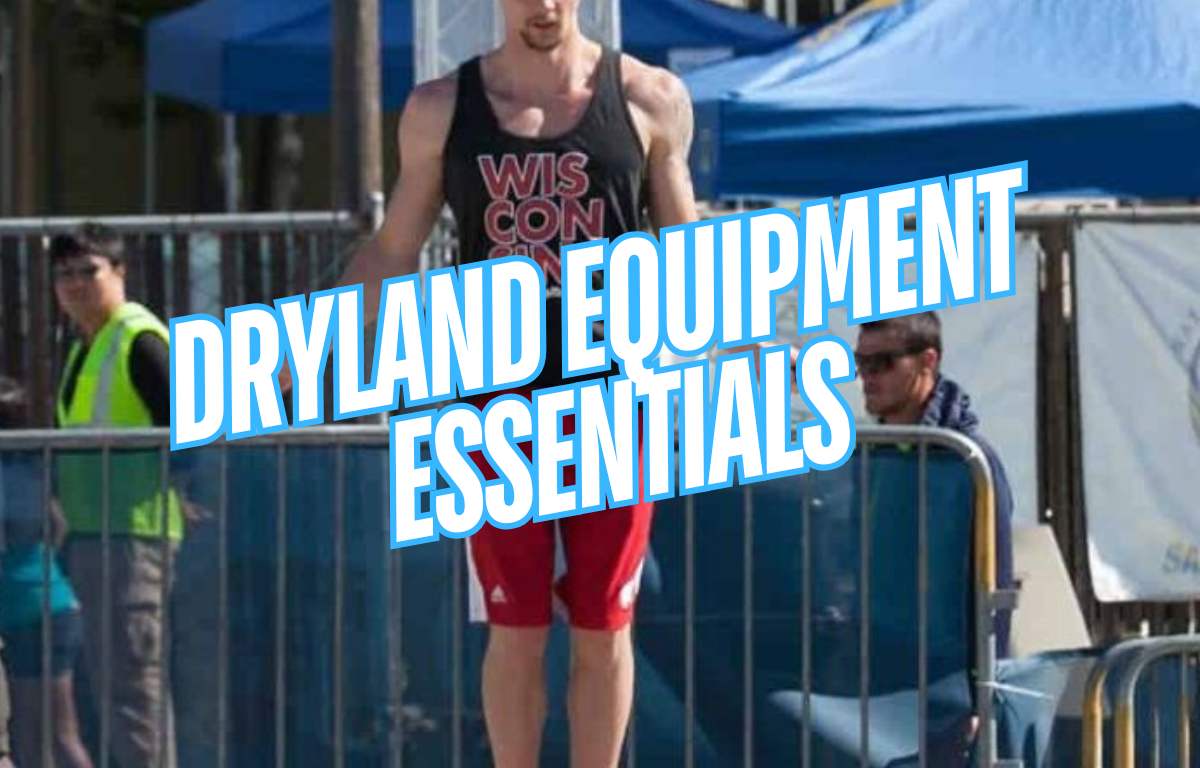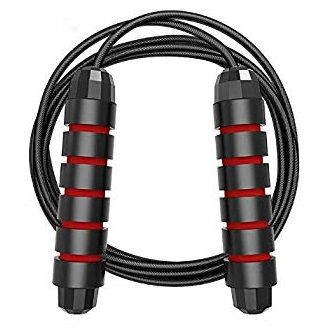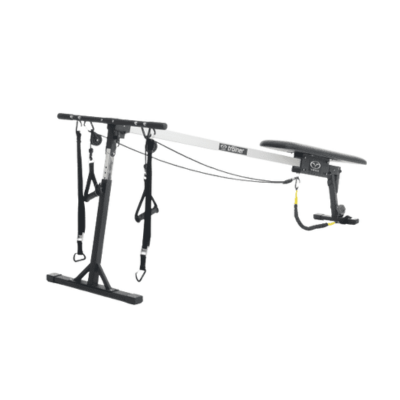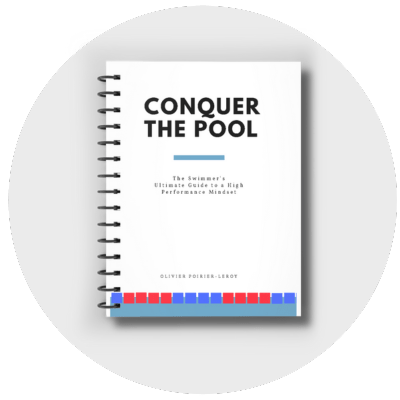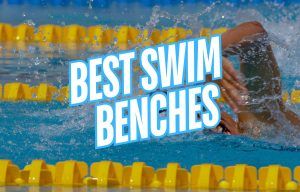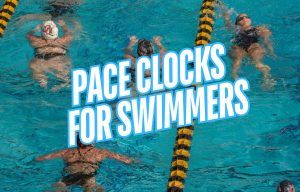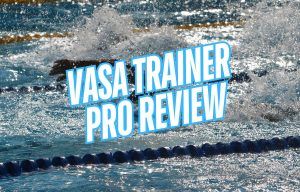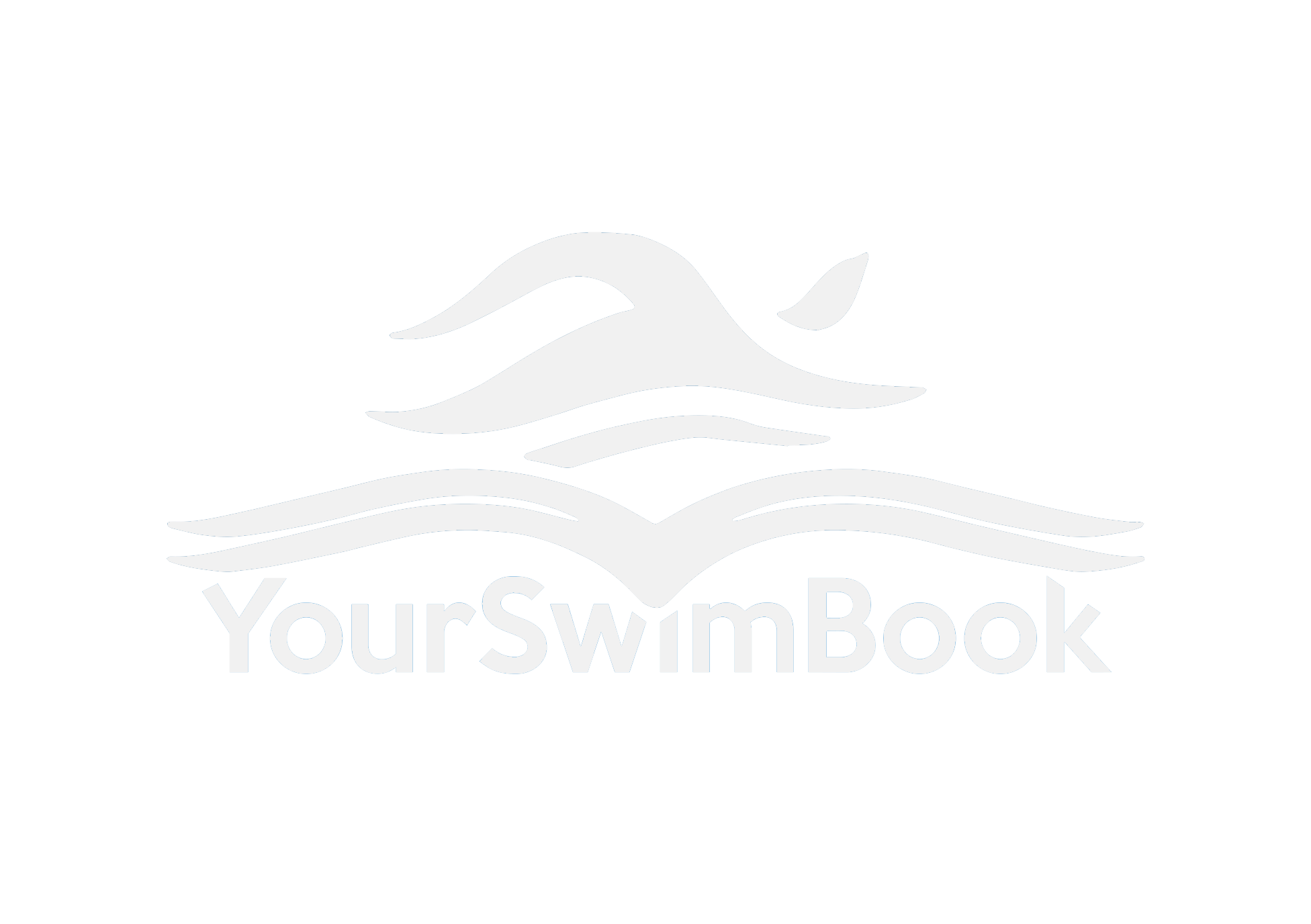Looking for some dryland equipment for swim-specific training? Here are my favorite dryland tools that swimmers can use to train at home.
Whether you are looking for ways to spice up the dryland training you perform between swim workouts or want to stay swim-ready during the off-season, there are some excellent dryland tools for building and maintaining strength and conditioning.
Although building overall athleticism is key in helping swimmers avoid overuse injuries, we can use some exercises and types of resistance training equipment to target the muscle groups used most in the pool.
In this article, we look at some dryland equipment essentials that swimmers can use at home or on the pool deck to improve performance in the water.
Let’s dive right in.
Dryland Equipment Essentials for Swimmers
The essential dryland gear for swimmers include:
- Stretch Cordz
- Pull-up bar
- Skipping rope
- Respiratory training device
- Slam Ball
- Swim Bench
Next, we will look at each type of dryland equipment, examine the pros and cons of each, issue recommendations for the “best” of each type, and offer up some other dryland training resources.
1. Stretch Cordz
One of the classic dryland tools for swimmers, StretchCordz are about as swim-specific as you can get for building strength in the pulling motion on dryland.
StretchCordz are great as they allow you to make technical corrections (you can really emphasize that high elbow catch), they can be used to train target stroke rate, and all you need is a doorknob to attach them to. StretchCordz are also useful for priming your muscles before swim practice or even competition.
A sample set I do with my StretchCordz is a simple 16x [:30 pulling + :30 rest]. As you progress, you can step back a little further, increasing the tension and resistance over time, strengthening your pull.
StretchCordz come in a variety of difficulties, with blue being the most challenging, and the have paddles to simulate swimming in the water with proper finger placement.
Make sure to hit your trusty foam roller and warm-up your lats prior—they will get a killer workout!
2. Pull-up Bar
Pull ups are another staple in the dryland training regimen of most swim clubs and teams. Most of the power for pull-ups comes from your lats.
Like any other form of exercise, technique and form is paramount.
While being able to rock and swing your way to a higher rep count might pad your ego, it’s form and technique that matter.
Researchers found that competitive swimmers who performed pull-ups with excellent technique were faster in the water compared to their teammates who could crush reps with less-than-optimal form.
The Iron Gym Total Upper Body Workout Bar is the same one that I have had at home for the past nine years, and ranks as my favorite doorway pull-up bar of all time.
It’s sturdy (at one point I weighed 265 pounds and this thing didn’t budge) has a variety of grips, and takes about three seconds to set-up. (You will wanna take it down if it’s in a high-traffic doorway lest you feel like bonking your head on it.)
3. Skipping Rope
Jumping rope is a powerful way for swimmers to safely boost aerobic conditioning, strengthen the ankles, and build fast twitch muscle fibers.
There are a few reasons that swimmers should hop to it and jump some rope: For starters, it is low impact. It helps develop ankle strength, builds fast twitch fibers without having to put a lot of weight or stress on the body, and can be done in the garage or in the driveway.
And unlike a StairMaster or stationary bike, your posture won’t go to Slumped-over-ville. Skipping rope encourages keeping your shoulders back and a straighter spine.
It’s low impact, doesn’t require a ton of room, and a skipping rope costs just a handful of dollars.
4. Respiratory Device
There are a lot of things that make swimming unique.
The biggie is the fact that there is a ton of breath-holding and breath control during our events. We hold our breath off the start, breathe every few strokes, and gulp down as much oxygen as we can before that final turn, when our lungs are burning and our legs feel like cement.
In the water we work on building breath control and discipline with breathing patterns, not breathing in and out of the walls, and extending our underwaters.
But there is a way you can strengthen up your breathing muscles on land—with a respiratory device called the PowerLung. The way the device works is exceedingly simple—you inhale and exhale into a plastic tube, with dials increasing the resistance on both sides of your breath. Think of it as weight lifting for your respiratory muscles.
When researchers had a group of competitive swimmers train with a respiratory breathing device for six weeks, the swimmers improved 100-meter times 1.7% more compared to the control group.
Anecdotally, after just a couple weeks of using the PowerLung Sport, my breathing “power” was remarkably improved. I don’t even know how else to describe it—my breaths were fuller and stronger. In the water, this improvement was especially apparent.
At the end of all-out sprints, when I would usually be racing to catch my breath, getting air down was more controlled and measured.
5. Slam Medicine Ball
Medicine balls are a great multi-purpose tool for explosiveness and strength. The ways you can use them are almost endless.
You can use it as a way to make your Russian twists—one of my all-time favorite core exercises for swimmers—more challenging.
You can roll them from hand to hand when doing off-set push-ups. And in terms of raw explosiveness, using medicine balls to perform wall throws and single and double-arm slams keep you sharp and fast.
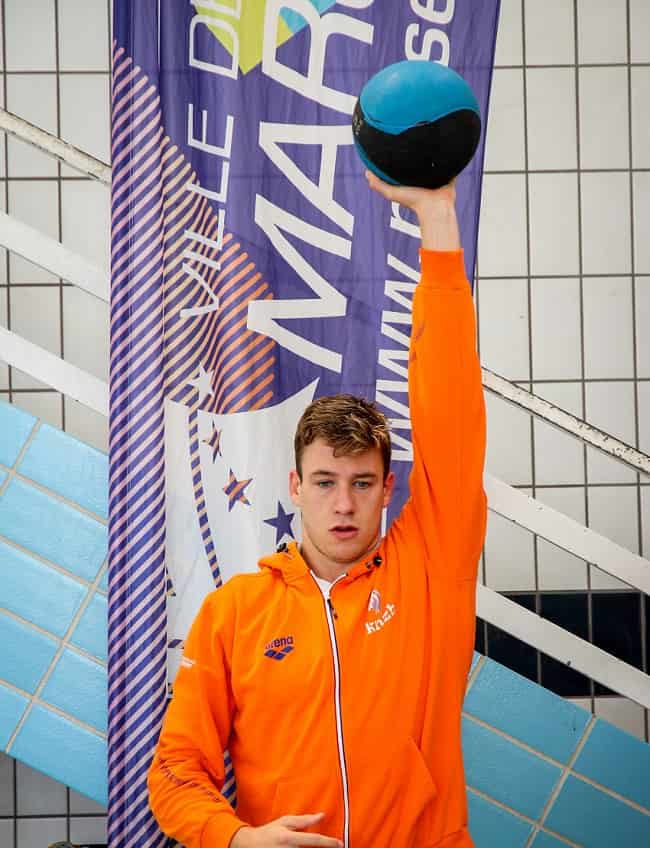
The only problem with most medicine balls is that throwing them into the floor, or into a brick wall, tends to crack the outer shell. I have split more than my fair share of medicine balls over the years, and the TRX Slam Ball is one of the few that can take a thorough slamming and not spill open like a can of beans.
The tread on the surface of slam balls means that you won’t lose grip of the ball, no matter how sweaty you get.
The Yes4ALL Slam Ball comes in a ton of sizes, from 6 pounds all the way up to 50 pounds, and is also well priced and ready to take all of the punishment you are willing to dish out.
6. Swim Bench
The swim bench is a little bulkier than the other items in this list, but it’s an awesome (and super common) type of dryland training equipment that can help swimmers improve in the water.
The main benefit of swim benches is that they allow swimmers the opportunity to really focus on building a stronger and more technically efficient pulling motion.
Swimmers can use the swim bench to really zero in on that early vertical forearm, crafting a catch that grips more water, and uses a more powerful path.
Studies (Pinos et al., 2021a; 2021b) with swimmers have repeatedly shown that power output on a swim bench is strongly linked to sprint freestyle times in the pool, making the swim bench essential dryland equipment for swimmers looking to build power in the water.
The VASA Trainer Pro is the best all-around swim bench for swimmers. It has adjustable resistance via the front post which can be elevated, as well as a cord and pulley system that can generate increased force output.
I fully reviewed the Trainer Pro (which you can read here) and love the smooth rail system, adjustable resistance, and versatility in paddle and grip options.
Definitely pricier than a set of Stretch Cordz (which can handle some of the same stuff), but for really isolating the upper body and building a bulletproof pull on dryland, nothing beats a VASA machine.
Tips for Building a Successful Dryland Routine
Dryland training exists to help swimmers improve in the water. The mechanism and goal varies by swimmer. Some will use core training to help improve posture while others will perform ballistic medicine ball throws to improve explosiveness in the pulling motion.
Whatever your goal with your dryland, here are some key things to remember:
✅ Make sure you are good to go with exercise. As with any weight training or aerobic training, make sure you are physically cleared. Check with your doctor and coach before undertaking any exercise program.
✅ Progression is the goal, not crushing yourself on day one. Ease into your new dryland training program. The goal is longevity and progression, not destroying yourself during your first session.
✅ Technique is everything. You wouldn’t swim with lousy technique, nor would you load a bar with a ton of weight without having a solid foundation of of form. Don’t sacrifice technique and form for high reps.
Fun (not really) Fact: A study (Wolfe et al., 2009) followed 94 athletes at an NCAA division I swim team over five years of swim training. A whopping 38% of injuries sustained during that time were during dryland activities, including strength training. Progression, technique, and matching exercises to your abilities is critical!
The Bottom Line
Dryland training is an essential for swimmers of all levels and abilities. It is a bit of a Swiss Army knife in terms of purpose, adaptable to each athlete’s needs.
The dryland equipment listed in this guide provide a wide range of improvement and performance for swimmers, from improving explosiveness to building core strength to enhanced respiratory capacity for less panicky underwaters.
Choose the dryland equipment gear that lines up with the things you are trying to accomplish in the water, hit the gym with focus and progression, and happy swimming!

